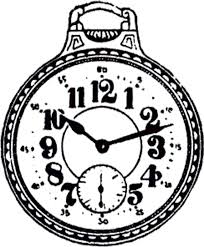Timing feeds

Myth: It’s best to time feedings, so you know how much the baby is getting. So should I time the feedings?
Fact: Women were having babies before clocks were ever invented! The key factor to making sure the baby gets enough milk AND calories, is by allowing babies to set their own pace.
Timing feedings means determining how often to breastfeed and/or how long to breastfeed and/or switching sides after a certain length of time. But timing feedings disrupts the natural flow of things — literally!
You see, as the feeding progresses, more of the richer milk gets released, as it does not flow as freely as the thinner milk. So it takes longer for the baby to get the richer milk.
If you only feed at certain times, baby might not get enough of that calorie-rich thicker milk and might not get enough milk overall.
Your milk production is dependent not only on good latching, but also on the frequency of feeding in the first few weeks. So the more often you feed, the more capacity for milk production this creates.
Watch for breastfeeding cues as often as an hour and a half or so during the first days and weeks.
As for switching sides: if you remove the baby at a set time to switch sides, s/he might not be getting enough of the richer milk in the first breast before being switched.
Then at the end of the timed feeding,s/he might be full, but with many fewer calories than if you had let baby spontaneously finish the first breast before offering the second. S/he might get digestive trouble afterward too, with too much of the sugary milk, and not enough of the fat. And be hungry again sooner!
Timing feedings is an example of the natural being determined by the artificial: timing feedings was started when people were feeding babies with formula, and parents had to measure how much milk to feed, so the baby would be less likely to overfeed or underfeed. But with breastfeeding, babies regulate themselves and their own caloric intake — if allowed to breastfeed freely — assuming, of course, the baby is well-latched, removing milk effectively, looking and acting satisfied after feedings. Twenty feedings a day where the baby is fussy, and NOT satisfied after feedings is NOT a good example of self-regulating.
Generally, if we’re talking about healthy self-regulation of feeding, this also means responding to baby’s cues whenever possible, and avoiding artificial nipples (pacifiers and bottles) which reduces breast stimulation, and in turn, milk production, and can throw the whole delicate system out of balance. Not to mention the added dimension of baby starting to prefer the artificial nipples, then getting in the habit of expecting them and maybe eventually refusing the breast and weaning to a bottle or pacifier.
This can happen even if mom never intended for that. So it’s best to keep life simple and stick to breastfeeding without artificial anything. If you never use artificial nipples at all, then that removes the possibility of baby weaning to an artificial nipple.
Lets talk about breastfeeding again. Giving baby a chance to decide when to switch — or even if s/he wants both breasts at each feeding — will ensure a full range of fore- and hind-milk, plenty of calories, and all the nutrients s/he needs for proper growth, assuming you do not have specific breastfeeding challenges that need to be addressed, in which case you might want to see a lactation consultant — or you SHOULD see a doctor if there is any reason to suspect a medical problem.
The only reason you might need to supplement a healthy baby who is gaining well is if baby is not getting enough sunlight, in which case it might be wise to give a Vitamin D supplement. Ask your doctor or public health nurse. But meanwhile, adequate sunlight will help to reduce or eliminate the need for a Vitamin D supplement.
So what is the best way to know when to breastfeed if you are not timing feeds or which side to feed from? Simple! Follow baby’s cues to feed. Learn more about that in the FAQ about Breastfeeding Cues.

